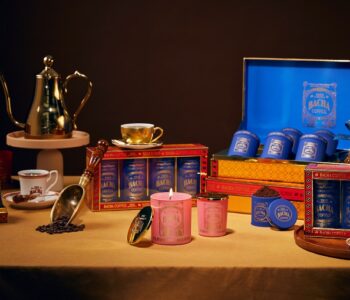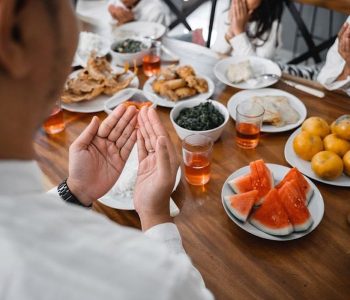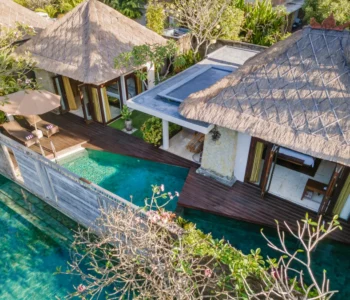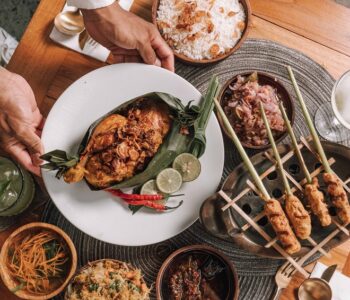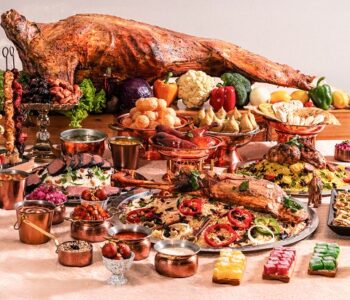
Many artists struggle to get recognition from the public eyes due to new names constantly emerging in the art industry today. For disabled artists with physical or mental disorders, it could be another challenge to win the market and convince the galleries.
Seeing this gap in the art ecosystem, Ciputra Artpreneur takes the opportunity to establish a market for art brut in Indonesia through its empowerment programme and initial exhibition for homegrown special artists.
In conjunction with Ciputra Artpreneur’s 5th anniversary, the leading art centre celebrates Indonesian artists by collaborating with Kapal Cinta community, Studio Hanafi, English artist Rob Pearce and other stakeholders to organise Outsider Artpreneur. Senior writer and lecturer Jean Couteau curates the 100 pieces of work by nine special artists.
Ciputra Artpreneur is inviting various artists, including Anfield Wibowo, Aqillurachman Prabowo, Audrey Angesti, Bima Ariasena Adisoma, Daya Olivia Korompis, Dwi Putra, Hana Madness, Oliver Adivarman Wihardja and Raynaldy Halim.
In the first edition of Outsider Artpreneur, which took place from 27 August to 8 September, the art centre aims to examine the market for Indonesian special artists by showcasing their paintings and organizing an auction led renowned auctioneer Deborah Iskandar from ISA Advisory. The one-week exhibition themed Pasung Kapal Lepas is also completed with a talk show about outsider art and live painting from the member of exhibitors.
Director of Ciputra Artpreneur, Rina Ciputra hopes the Outsider Artpreneur could be the annual celebration for art brut in Indonesia and able to expand the market for homegrown special artists. Ciputra connects with Studio Hanafi and Nawa Tunggal, the founder of Kapal Cinta Community as a partner that could potentially improve the artist’s skill and generate value of the artworks for market deal.
“Ciputra Artpreneur always implements art and entrepreneurship as a core value to run event and programme. In this case, we have a chance to build the capacity for the artist, establish the market and promote equality about disability community,” Ciputra said.
“The big picture is that the works from outsider art can be appreciated in the existing market that able to empower them. At the end, it could create an environment for their self-independence,” Ciputra added.

Nawa Tunggal, a senior journalist and founder of Kapal Cinta Community revealed that the disabled community is still excluded in the society. Tunggal, who have vast experience covering art issues in Indonesia, runs an art programme in the community whose members are in the spectrum of neurological disorder such as autism, dyslexia, asperger, bipolar and schizophrenia. “We need government action to create an inclusive society and policy which opens the opportunity to multiple groups within the society, including the disabled community. So far, the initiative mostly comes from private sectors,” Tunggal stated.
Donny Mardonius, father of artist Anfield Wibowo has been fighting by himself to introduce his son to the art world. Anfield Wibowo, 14, suffers from Asperger syndrome and deaf. Wibowo is influenced by figurative, abstract, expressionist and naturalist style with an impression of old paintings. His works have been displayed in the Transjakarta bus, and also at the canteen of the National Gallery. He held a solo exhibition at Taman Ismail Marzuki twice, once at Galeri 678 Kemang and at Balai Budaya Jakarta. Anfield has donated his painting to social institutions including orphanages, churches and other social foundations.

“So far, I have to be proactive to introduce Anfield’s works to the public. We fight to win the heart of art stakeholders. I’ve found a handful of people with interest in Anfield’s artistic works. If the market is ready for disabled artists, there will be more people appreciating their arts,” Mardonius said.
Art brut market
Since it was first introduced in 1948 by French sculptor and painter Jean Dubuffet, art brut (outsider art) in the western world kept moving progressively. Popularised by English author Roger Cardinal in 1979, many first world country has established outsider art exhibit in London, Berlin, Paris, Tokyo, and New York, followed with a development of inclusive market for diverse artists at the biggest market in Art Basel.

There are not so many special artists who are recorded in world art history. Post-impressionist painter Vincent Willem van Gogh suffered from anxiety and depression. The renowned Dutch artist also faced a crisis of epilepsy. Louis Wain, Francisco de Goya, Paul Gauguin, Edvard Munch and Michelangelo are among the generation of special artists from the 19th century whose names were written in art archive.
Prolific Mexican artist and surrealist, Frida Kahlo was disabled by polio as a child, which made her right leg thinner than the other. In recent history, Japanese artist Yayoi Kusama has lived in a psychiatric hospital suffering from a bipolar disorder. Kusama is considered as the most expensive living female artist whose work, White No.28 (1960) from her signature Infinity Nets series, was sold for USD7,1 million at a 2014 Christie’s auction.

The Need for Artwork Variety
In Indonesia, progress has shown over the last few years with focus on promoting equality and acknowledgement to disable community. Art is also promoted as a therapy to cope on their struggle in mental illness. Last year, 35 special artists showed their works at the National Gallery of Indonesia for the exhibit Pokok di Ambang Batas supported by British Council and Institut Français d'Indonésie.

Hanafi, a reputable painter who’s responsible for art brut workshop during Outsider Artpreneur about the reluctance of Indonesian market. Local art brut have minor contribution to the national art sales with a perception to less deal compared to mainstream arts and the qualification to meet the standard of the galleries and art fair.
“I think it’s only speculation that art brut will not be profitable for mainstream market. It’s really important to offer diverse products in art market because people also want an option beside dealing with expensive pieces from established artists,” Hanafi told NOW! Jakarta.
The unwillingness to look forward to art brut is also causing a lack of interest in providing a platform for it. “If the platform doesn’t exist, how could these special and talented artists become known? Profit and loss is common in art deal, but why don’t we have a place for them?” Hanafi questioned.
Disabled artist Faisal Rusli sold his painting with a price ranging from USD 500 to USD 2,000 during a solo exhibition titled Color of The Journey in 2017 at West Torrens Auditorium Gallery, Australia. A rising name in art brut, Hana Madness works independently by collaborating with a number of organisations, such as British Council and ARTOTEL and also selling derivative products such as accessories and merchandise.

Hanafi said that many Indonesian artists have provided a different range of artworks including the works from emerging and disable artists and both market and dealers are expected to respond to a variety of those artworks to enrich homegrown industry. “Art market is always niched and curated, but at least gallery and dealers have to give a slot to those specific works to offer many options for art collectors,” Hanafi explained.
From an artistic perspective, Hanafi thinks that art brut gives people an alternative state of mind beside the mainstream works. “Art brut can be other valuable pieces which could enrich the existing market and make it more competitive. At the end, there is possibility for equal opportunity,” Hanafi stated.
“Of course we can’t control the market. In the development of art brut in Indonesia, we need multiple roles from artist, gallery, dealer, curator, marketplace and government to make it work. There is possibility to work together and harvest the outcome together,” Hanafi stated.


